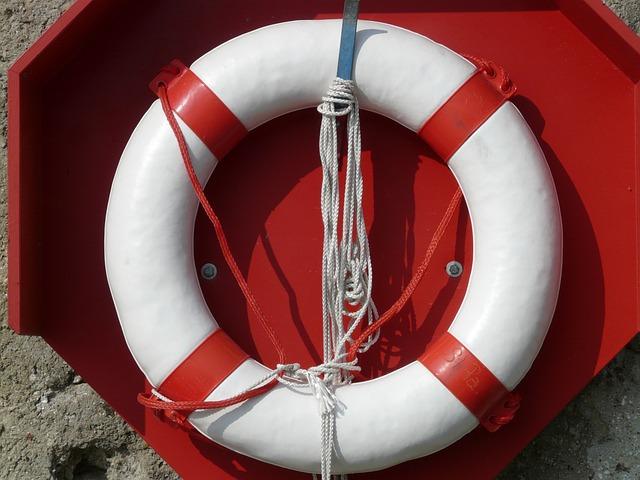We want you safe!
Nothing is more important than keeping everyone safe at the lake. From basic rules and laws of boating to making sure that you have the right safety equipment for each person joining you, our goal is to make the stay a super fun memory with everyone safe.
The lake is patrolled by the Tennessee Department of Wildlife Resources (TWRA). They are officers and function as the police on the lake. Also patrolling is the US Army Corps of Engineers. They are responsible for the overall management of Dale Hollow including camp grounds, water access, water level and the protection of the land and water.
Water Safety Tips from the U.S. Army Corp of Engineers for Safety at on Dale Hollow Lake.
- Everyone Understands the risk of drowning – Strong and not-so-strong swimmers can find themselves in trouble in the water. Water temperature, water motion and other environmental conditions all make swimming in lake waters different from swimming in a pool or an ocean.
- Life jackets should be worn at all times. By everyone. The average time it takes for an adult to drown is about 60 seconds. For a rescuer to put on a life jacket, enter the water and reach an endangered swimmer takes an average of 10 minutes AFTER the emergency is recognized.
- If you will not wear it for yourself then wear it for those who love you. Great information on life jackets can be found. We have listed the US Coast Guard recommendations about life jackets HERE.
- Never Swim Alone and KNOW Your Ability
Water movement, temperature and you own swimming ability contribute to your survival in a fall or even a planned entrance into the lake. Swimming with someone is one of the biggest factors for your swimming safely. - It is also important to recognize that while the top of the water may feel refreshing and cool, the water less than 2 inches below the surface has already stratified and will be at temperatures closer to 64F. In this water, hypothermia is a real risk – even on very hot days. Generally, when the air temperature is slightly cooler than the water, the water will feel refreshing. But the human body can only handle a very narrow range of temperatures before we get into trouble.
- IF the human body cools to match the 64F water, the heart will stop. Spend time in the water, but watch that you keep your body moving and that you don’t dangle with your head above the water and torso and legs hanging in the cold temperatures.

Alcohol and water are a deadly combination.
When underwater and under the influence of alcohol or drugs you can suffer from an inner ear condition (caloric labyrinthitis) that causes you to become disoriented and not know which way is up.
Also, boaters can develop “boater’s hypnosis” a condition in response to sun, wind, noise, vibration and motion which causes fatigue and slows your reaction time.
Combining that condition with alcohol or drugs greatly reduces your coordination, judgment and reaction time, which could lead to deadly consequences.
Alcohol also impairs the body’s ability to regulate its core body temperature. That means that being in cold water after (or while) consuming alcohol can increase the risk of hypothermia.
Inspect Your Equipment
Perform a safety check of your vessel and the equipment on board before every trip. Make sure you have all the required equipment in good working order on board such as life jackets, throwable device, certificate of number (state registration), fire extinguisher, visual distress signals, sound producing devices, and whatever additional items Federal and your state’s laws require.
Check the equipment for rot, mold or other things that can compromise whether it will work as intended. Check your engine, ventilation, backfire flame arrestor, electrical systems and trailer before you go.
Boat Responsibly
You are responsible for any damage that your vessel or your wake causes.
Obey all signs and posted restrictions.
Stay within the buoys.

Learn the Huddle Position
Cold-water immersion is the cause of many boating-related fatalities. The danger increases as water temperature decreases below normal body temperature (98.6 degrees F). Cold-water immersion follows four stages, starting with cold shock, followed by swimming failure, then hypothermia and finally post-rescue collapse. Most cold-water drowning fatalities are attributed to the first two stages, not hypothermia.
All boaters should wear a life jacket and dress for the water temperature, not the air temperature. If self-rescue is not possible, actions to minimize heat loss should be initiated by remaining as still as possible in the Heat Escape Lessening Position (HELP), where your knees are drawn to your chest with your arms grasping them together, or simply huddling with your arms around other survivors in a circle. Additional layers of clothing can help you stay afloat by trapping air. Wet clothes will not weigh you down in the water.
Storms on the Water
Sudden storms do happen. In the event you are caught on the water during inclement weather, make sure that everyone’s life jackets are on, have them sit on the bottom of the boat at the centerline.
Reduce your speed and steer the bow of your boat into the wind (or waves) at a 45-degree angle.
Personal watercraft should head directly into the waves.

Take the Boating Safety Course
The State of Tennessee requires that boat operators born after Jan. 1, 1989, must have taken and successfully passed the written exam for the State’s Boating Safety Course.
You are required to always have your wallet card proof of course with you on the water and operating a vessel.
The course is not limited, however, to boat operators. Anyone spending time on the lake will learn valuable safety information to help keep everyone safe on the lake. Register here for your boating class.
Boat Engines Emit Carbon Monoxide (CO)
CO is a colorless, odorless gas that can harm and even kill you while you are inside or swimming outside of a boat. CO is lighter than water so it invisibly hovers on the water’s surface. Prevent the unexpected by learning more about where CO may accumulate and CO poisoning symptoms.

